Stay in touch
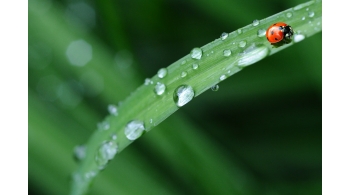
Humidity is the basis of the microclimate in the greenhouse
Humidity is one of the components of the microclimate in the greenhouse, it plays an important role in the development of plants and the preservation of conditions favorable for fruit ripening, and also maintains a balance in which pathogenic organisms do not develop and crop immunity remains at a high level.
Too many factors affect the humidity level - temperature, transpiration of plants, ventilation schedule, light intensity and much more. If left unattended, the loss of moisture control will lead to plant diseases, lower yields and increased energy costs. It is important to consider that plants are much more sensitive to air humidity. For example, at the same level of relative humidity but different temperatures, they may have different water requirements.
The consequences of too high humidity: disease outbreaks, the appearance of mold and fungi, edema, guttation, mineral deficiency, softening.
The consequences of too low humidity: wilting of plants, too small size of leaves and fruits, curling of leaves and stunted bushes, dry tips of branches and leaves, diseases, the appearance of spider mites, complete dehydration.
It is important to note that different crops require different ideal humidity levels, so there are no universal recommendations, you need to select the microclimate individually, taking into account the characteristics of the plants, the location of the greenhouse and the capabilities of the equipment.
The only universal rule for all greenhouses is to avoid the "dew point", as the appearance of condensation on plants, greenhouse structures and other surfaces colder than steam, leads to the growth of pathogenic microorganisms. Therefore, at a relative humidity level of 90% and higher in the greenhouse, the temperature cannot be lowered - even a slight decrease will lead to dew loss.
In order to avoid dew fall, you should: use energy-saving screens at night, avoid temperature changes, especially at dawn (as well as in the spring and autumn periods). At this time, it is worth programming the climate control system to gradually warm up the air and simultaneously dry it until the sun appears over the horizon.
Use vertical fans that make the temperature more uniform throughout the greenhouse, regularly inspect the equipment for accuracy, compare results and take into account errors. You should not work with climate control on the "set it up and forget about it" principle.
Reducing the humidity level is much easier than increasing it. At the same time, humidification should occur regularly, especially in greenhouses with seedlings, as well as in greenhouses in which the air quickly becomes too dry and warm. It is necessary to humidify the air correctly so that puddles do not form on the floor, and condensation on the surfaces. For this, you can use foggers, as well as fine sprinklers. In addition to saturating the air with moisture, this equipment also helps to lower the temperature in the greenhouse and reduce the airflow.
It is not easy to manage the microclimate in the greenhouse, for this you need to constantly keep under control the indicators of the thermometer, the indicators of the "wet thermometer", the pressure of saturated vapor, psychrometer, etc. modern equipment. After all, the microclimate and humidity are the basis for the health of the root system, proper growth and high productivity of any plant.
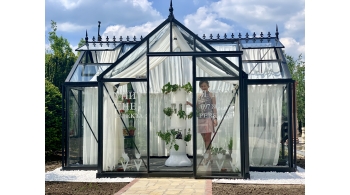
Types of curtains in the greenhouse
The curtain system is one of the important equipment systems of a modern greenhouse. This system is also called shielding, as it is like a screen that protect you and your greenhouse from all sizes.
There are two types of curtain systems: horizontal and vertical. Their tandem in your greenhouse will give the desired result.
A horizontal system is a "leading" system through which you regulate the microclimate. It is installed under the roof and attached to the greenhouse trusses. This curtain provides a complete overlap of the top of the greenhouse. You can provide a double or even triple curtain system, combining the functions of different fabrics. In this case, one screen is on the top belt of the trusses and the other is on the bottom.
Vertical system - helps the horizontal fabric to show its functions and achieve the desired results. This system is installed on the side and end walls in the girders. Installation of systems is specially provided so that at the folded look of these systems it is absolutely not visible.
The screens open and close as needed manually or automatically from the greenhouse microclimate control system.
When you use both systems, you are in complete control of the process, because all four walls of the greenhouse and the roof are under your control!
Today, manufacturers offer a huge selection of greenhouse screens that can create and maintain an optimal indoor climate at any time. And also help your greenhouse look quite attractive and atmospheric.
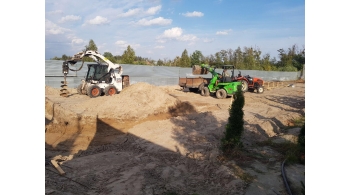
Preparatory work for the installation of a farm greenhouse
Autumn is on the calendar, and the weather continues to spoil us with sunny days. Taking advantage of the ideal weather to fill the foundation, we are actively carrying out preparatory work before the installation of a farm greenhouse on the territory of the Eva Garden Center. This is the third Perspekta greenhouse in this garden center, which will serve for the conservation of specialized ornamental plants.
The project of a Gothic type farm greenhouse is suitable for any region of Ukraine. Structural loads allow the greenhouse to be used at any time of the year. The roof and walls are covered with a double layer of greenhouse film with an air injection system. Air is fed automatically between the films, creating an air layer between them. This system is the most energy efficient.
A ridge height of 6.2 m guarantees optimal placement of trees inside the greenhouse and an even climate. And for ventilation in hot weather, an upper window is provided along the entire greenhouse.
If necessary, the greenhouse does not need to be heated or folded if one block is provided (without modular continuation). There is also the possibility of a modular set, which allows you to cover a greenhouse of more than 2.000 m2 and 10.000 m2 under one roof.
We are preparing for the installation of the greenhouse in a great mood. We are sure that the result will delight our regular customers with the high quality of Perspekta!
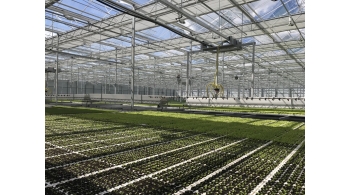
The process of growing in salad lines
We have repeatedly said that the lettuce line is one of the most effective systems for growing in a greenhouse. To date, this technology offers the highest results without the use of any chemical treatment.
The production of salads and herbs begins from sowing. To do this, use automated seeding lines. Pots in which lettuce and greens will grow are filled with substrate and seeds. They are then watered and treated with biological pest control. As a rule, peat or mineral wool is used in the system. Then the pots on special cassettes are moved to the germination chamber.
Cassettes with grown plants are placed on seedling tables, which are irrigated with adjustable mobile watering rods. When the plants have a well-developed root system, they are ready for transplantation into a hydroponic NFT system.
Next - automated tables. In this system, the trays with the plants move automatically. The distance between the trays automatically increases according to the need of plants in space as they grow. This means that the same number of plants can be grown in small greenhouses, thereby reducing energy consumption and investment costs; or increasing productivity and efficiency in all respects compared to a similar area of the greenhouse with standard systems.
Plants are watered and fertilized automatically thanks to the control system. Water is dosed in trays from droppers of the compensated pressure. Flowing through the trays, the water goes into the circulation tank, located under the salad lines. The system is built in such a way that the plants receive the required amount of water and nutrients. All remaining water is purified, returned to irrigation tanks and reused.
At the end of the growing process, the plants automatically move to the edge of the line and are ready for harvest. Harvesting takes place at the end of each table-line. Collected salads can be packed in boxes or plastic packaging directly from the table. If desired, you can use the conveyor to transport the collected salads to the centralized packaging area. Finally, the empty trays are washed with a sink under the packing table. Then on a special conveyor trays are moved to the beginning of the line. The cycle begins again.
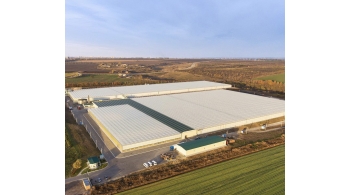
Modernization of the greenhouse complex "Dnipro"
We are glad to announce that the other day we have completed a number of works related to the modernization of one of the largest and most successful greenhouse complexes in Ukraine - TC “Dnipro”.
For this, special equipment was supplied by Dutch specialists from Perspekta, namely, an extension of a greenhouse for hydroponic growing of green mass with an area of 1280 m2.
In addition, a hydroponic interplanting system was installed for a block of 5 hectares.
We are glad to cooperate with TC “Dnipro” and wish you further prosperity and good harvest!
We remind you that Perspekta is the most reliable supplier of European greenhouses for any purpose: industrial production, professional farming and greenhouses for your garden!
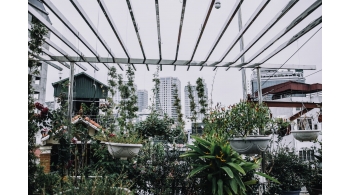
World's largest rooftop greenhouse opened
Rooftop greenhouses are becoming more popular every day. This is an excellent solution for which both small glass greenhouses and large industrial ones are used.
The world's largest rooftop greenhouse recently opened in Montreal to meet the growing demand for locally sourced produce.
This is a rather original choice of place for growing organic vegetables. The greenhouse is located in the heart of Canada's second largest city with an area of 15,000 square meters, or about the size of three football fields.
They grow food in an environmentally friendly way where people live, which is very convenient. And this is already the fourth greenhouse on the roof, which was built in the city.
At the same time, a local supermarket in Montreal offers an assortment of vegetables grown on its roof, which has been "greened" to reduce its greenhouse gas emissions from climate change.
Want a rooftop greenhouse? - Perspekta greenhouses are perfect for this!
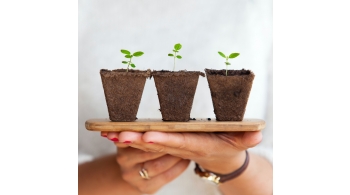
How to empower plants in a greenhouse
All scientists around the world have been talking about the huge problem of the growing population of the planet, while every year food resources are decreasing.
It is amazing, that solution to this problem can be provided by nature itself.
This unique growing method is called "Growing by Plant Empowerment". This concept is fully discribed in book with the same name, written by Peter Geelen, Jan Voogt, and Peter van Weel., which is advised to read by everyone who is engaged in crop production.
It describes the cultivation of a new generation, the principle of which is to create all conditions in the greenhouse, excluding stress for the plants. For this one, it is important to constantly monitor and control the balance of plants, effectively manage light, water, nutrients and CO2.
The main thing is to realize that plant at the same time is a living physiological being and an object that obeys physical laws. Plant growth and health is influenced by the balance of water, energy and assimilants, as well as within the greenhouse by the balance of moisture, solar energy and CO2.
Greenhouse curtains play a special role in it. If earlier greenhouse screens were devices to reduce costs of energy, then now they are increasingly being used as a tool to help plants grow better. With their help, you can control the balance of all components of plant growth. Efficient screens also provide more uniform greenhouse climate. Practice also confirms this.
An interesting fact, ten years ago, when growing pepper in the Netherlands, the decision was made to close one of the screens for 1800 hours a year, now it is from 3000 to 3500 hours. In this case, several climatic screens are used, for saving energy and for shading.
High quality of a scattered light, which allows your plant to process more light and increase photosynthetic efficiency, is essential for high yields and quality of your produce.
We hope that the article was useful for you, we are collecting the most interesting news in the world regarding greenhouse production!
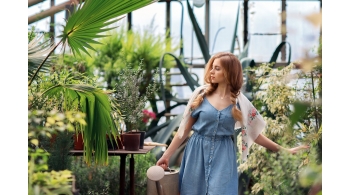
Some tips for protecting plants in the greenhouse
Greenhouse production is an industry that is developing rapidly and is quite profitable. However, growing plants in a greenhouse is accompanied by many risks, which manifest themselves in the form of pests and diseases that develop in the middle or come from the environment. Often the greenhouse is an open ecosystem, which will create favorable conditions for the development of unwanted microorganisms.
In order to solve this situation, we will consider modern approaches that are adapted to the conditions of Ukraine for integrated plant protection in the greenhouse.
The main ways in which an insect can get to the middle of the greenhouse can be doors, transoms, various vents, careless combination of layers of plastic wrap and the presence of mechanical damage.
The first thing to do is to install a hygienic barrier before entering the greenhouse. It may consist of three closely spaced sheets of polyethylene, which form a zigzag maze. This simple method will prevent the insect from entering the greenhouse freely, even when the door is open. Ventilation openings, including transoms and open sidewalls, should be protected by ordinary mesh with a cell diameter of 1-2 mm. This will control the circulation of fresh air during the hot season and prevent the intrusion of unwanted guests.
Before entering the greenhouse, it is necessary to place a hygienic carpet, which is a soft cloth soaked in disinfectant. This is necessary to clean the shoes from possible pathogens. Inside the greenhouse, all employees must use sterile instruments during phytosanitary work. This means that when pruning excess vegetative mass, pruning, etc., the tools are treated with a disinfectant solution every 3-5 plants, provided they are healthy. When removing diseased plants, all tools used for this purpose should be disinfected immediately after each individual plant, and the removed biomass should be placed in a plastic bag and in no case be left on the soil surface. Ideally, harvesting should also be done with clean hands. The hygienic solution is prepared on the basis of household soap and citric acid, which should create a neutral reaction.
Pheromone traps are used in the greenhouse, for example, in a checkerboard pattern, to monitor and evaluate existing pests. Their essence is to attract the attention of male insects with artificial sex pheromones of females. Several pheromone traps are also located outside the greenhouse for background monitoring of the pest population in the region.
Take care of the health of your plants in the greenhouse, they will thank you with a bountiful harvest!
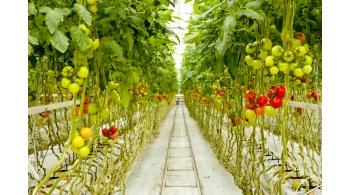
White topsoil for greenhouses
You may o see in the greenhouse white cover of the soil. Do you know what it is used for?
Many cultures are very sensitive to exposure to light. Therefore to increase the efficiency of growing crops in the greenhouse a special white fabric is used that reflects light from the bottom of the plants.
The immediate result of the application of the cover is an increase in production by increasing og the light amount. It also protects against insects entering the greenhouse from the soil and keeps the greenhouse clean from drains.
The fabric is made from weaved polypropylene threads with such a density that water can seep through it. The coating is double-sided - black on the inside and white on the outside (to reflect light). The fabric is strong enough to walk over it.
More and more useful news from Perspekta… Follow our updates!
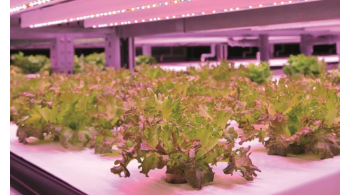
LED lighting in greenhouses
The lighting system is an integral part in greenhouse production. Artificial lighting in greenhouses allows you to get high yields regardless of weather conditions, improve product quality and use a continuous growing cycle.
There are several types of lamps, the most popular are: HPS lamps, LED, metallogenic, fluorescent, incandescent and high pressure mercury lamps. The type and power of the "growth lamps" depends on the height of the greenhouse and the type of crop being grown.
The use of LED lamps in a greenhouse is the most promising today, because with an identical amount of light with HPS, LED lamps consume 40-50% less electricity with operational life-time over 50,000 hours. That's about 15 years of use. The service life and relatively low energy consumption are the main advantages of LED lamps while their relatively high cost is the main disadvantage.
For crops that require relatively low light levels, such as lettuce and herns, many greenhouses are gradually shifting to LED lighting. Lettuce and herbs has shown the best results for LED lighting applications nowadays.
When choosing LED lamps, it is important to consider that different crops require a different spectrum. For most flower types universal spectra are developed by various manufacturers. Spectra have been developed for vegetables, lettuce and herbs, which are suitable for each type individually.
Do you have questions about lighting? We will be happy to tell you more!
+38 044 334 70 34
www.perspekta.ua
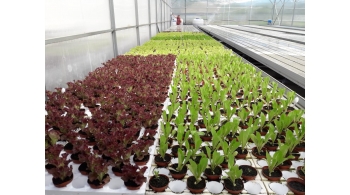
Hydroponic benched in the greenhouse
Hydroponic benches are used for different purposes in the greenhouse. They are used in to grow seedlings, pot plants, lettuce or strawberries.
There are two widely used types of hydroponic benches: stationary and rolling. Container-type and sliding systems in that sense are not as widely used.
Stationary benches are more commonly used for gardening, sale in garden centers, farm greenhouses and orangeries. Their advantage is lower price than rolling ones since they are easier to manufacture. They are also easy to carry from place to place if necessary.
Sliding benches are more specialized for greenhouse growing. They are made to order in the length that suits your greenhouse, allowing you to effectively use the area: the net cultivation area will be up to 85-90%, leaving 10-15% for crawling. Rolling is very simple - a bench of 30-40 m long can be moved with one finger.
It is worth considering that each type of plant has its own requirements for proper growth. We will help you determine your crop and find the right growing method to achieve the best result!
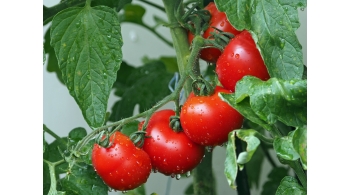
Historical anti-record prices for tomatoes in Ukraine
It was recently recorded an anti-record of the price of tomatoes, it got incredibly high. Number of factors caused such rise of prices. Firstly, the tomato harvest suffers from weather disasters. Farmers of Transcarpathia have lost part of the harvest due to massive flooding of plastic greenhouses. In the south, the season for picking ground tomatoes was delayed due to constant weather changes which, accordingly, negatively affected the yield. In addition, for the second year in a row we have seen a reduction in the area of open field grown tomatoes. The population's demand for ground tomato is also decreasing, Ukrainians canning less tomatoes (which was a tradition) and eating more fresh salads", explains Tatiana Getman, head of the “Info-Shuvar” analytical department.
Another reason is the cold spring. Planting at some greenhouse plants was delayed until mid-summer. That is why the last batch of greenhouse tomatoes was lower in demand on the Ukrainian market.
International tomato trade figures provide further evidence of declining domestic supply. For three seasons in a row, Ukraine has been reducing exports and steadily increasing imports of tomatoes.
And we remind you that Perspekta greenhouses are the best investment solution for both the greenhouse business and hobby!
And by the way, the tomatoes grow excellent here! Doubting? Visit us, we grow tomatoes in our. Demo greenhouse!
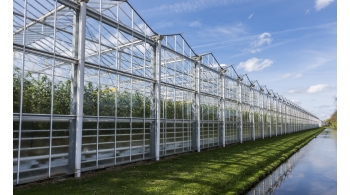
VENLO type greenhouses
The Netherlands is a world leader in the production of greenhouses and greenhouse equipment. Over the past decade new technologies have made it possible to shift energy consuming equipment to environmentally friendly and energy saving greenhouses. Dutch history has developed main three models of greenhouses: the traditional Venlo type, wide-span greenhouses and convertible greenhouses.
Venlo type greenhouse is the most popular as its the most affordable compared to other types. In addition, it can be fully adapted to your requirements. The combination of steel, glass and aluminum makes these greenhouses extremely durable with relatively low operating costs.
Loading bearing part is steel and the material for glass aluminum, that’s why Venlo type is called "lightweight construction”. The structure of the load-bearing frame consists of columns, trusses, trays, girders, braces, joints and connecting elements. Rubber gasket between glass and aluminum allows you to tightly seal the greenhouse from water and wind.
We manufacture all products considering the internal greenhouse, wind and snow loads of the region in which you plan to build. Each component is made as light as possible, while adhering to design standards.
We will be happy to provide you with professional advice on the construction of greenhouses, just call!
044 334 70 34
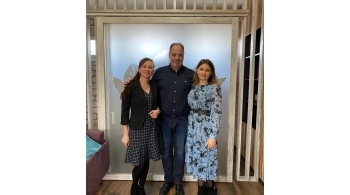
Training of Perspekta managers
Perspekta Group is ever learning team without lagging behind the world's greenhouse technologies.
We are constantly find out new things, gaining invaluable experience, accepting new challenges with interest and inspiration! All in order for our clients to be satisfied and get the desired result.
This year, a training seminar was held for our managers, at which Dutch specialist Rolland Fidder shared his experience in working with plastic greenhouses.
We learned a lot of new and interesting information, got acquainted with the main types of greenhouse film, analyzed the features of all additives and how best to use them.
We can easily choose the best version of the film just for you, taking into account the specifics of the project. So if you are hesitant in your choice - call, we will be happy to help!
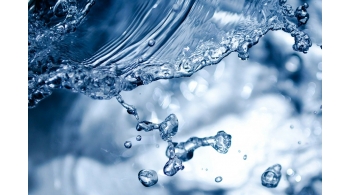
Water quality is one of the most important factors for plants
Water is source of life. Water is also an integral part of the growth and development of all living things. Its quality directly affects the health of plants.
Usually water used for irrigation in greenhouses is taken from sewer, river, lake or well. Best source could be a rainwater together with combination of the above.
When planning building of the greenhouse, a water analysis must be performed before ordering the irrigation system. Results of water analysis will help to determine whether the water is suitable for or not. Depending on the situation and the condition of the water, purification systems, filters or reverse osmosis can be provided. The latter is the most expensive and difficult method of cleaning, but it is the most effective.
Don't forget to analyze your irrigation water if you don't control its quality - your systems can break down quickly! If doubt - contact us, we will advise you how to use every drop of water effectively, without harming the plants and equipment in greenhouses.
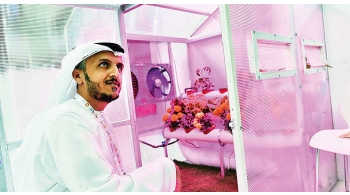
AI Greenhouse
Global technologies are developing faster than we can imagine, even in greenhouse field.
Global Forum on Innovation in Agriculture was recently opened in Abu Dhabi. Among many innovations a mini-greenhouse controlled by artificial intelligence was presented.
The greenhouse has a control panel to control temperature, ventilation, lighting and watering. All the grower needs to do is set up the control panel.
Greenhouse is energy efficient and does not consume much electricity. You can make a mini-greenhouse with solar panels, as well as recycle used water.
“Smart greenhouses” come in various sizes to choose from. The largest is able to accommodate 288 plants.
Greenhouse producers noted that the company has developed another version of greenhouses specifically for children. These are the first greenhouses in the world created so that children can get closer to agriculture and love the concept of planting. They can accommodate about 15 plants controlled from iPad or smartphone.
This is a real step towards smart farming, facilitating the process of growing plants for both adults and children.
And if your child is bored during the summer holidays - get him a Perspekta mini-greenhouse, he will definitely be delighted!
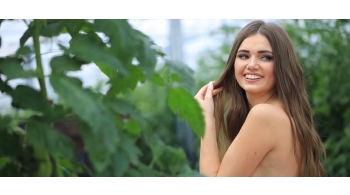
Unusual way of using a greenhouse
We often write about uncommon ideas on “how you can use a greenhouse” besides growing plants.
Now we faced with absolutely new way of greenhouse application that surprised us. Are you intrigued?
Quite recently in Latvia one of the famous magazines called Klubs held a “spicy” photo shoot in an operating industrial-type greenhouse.
This June magazine’s cover is a model with first crop of tomatoes and cucumbers on the background. We are sure that the photo not only attracted the attention of many but also increased the popularity of greenhouses in general!
Lets face it, photo shoot in the greenhouse is quite unusual but so beautiful and natural!
The most interesting news is only here, stay tuned every week!
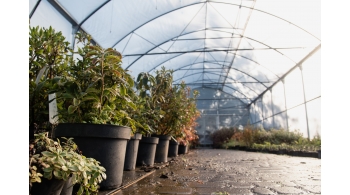
Did you know that about greenhouse plastic film?
Did you know that aggressive agricultural chemistry destroys the plastic film of your greenhouse?
This is one of the important factors that can affect the life of the greenhouse film. Disinfectants and pesticides based on Chlorine and Sulfur have particularly negative effect.
Chlorine and Sulfur enter into chemical reactions with most UV stabilizers and neutralize their effect. This leads to the removal of UV protection leading to ultraviolet light penetration that destroys the greenhouse film and resulting sometimes in several months complete destroy of plastic film. In that case plastic film becomes turbid, light transmission decreases, plastic loses its elasticity and strength.
It is very important to take care of your film so that it serve you longer and retain all its properties.
If you have a question how to choose the right film - contact us! We are always happy to help and provide you with the best solution!
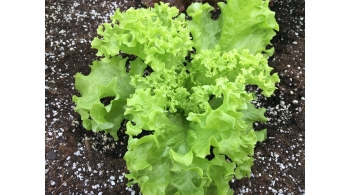
Growing lettuce in a greenhouse
We love greenhouses and everything related to them. We enjoy the most when eat healthy vegetables, berries, green crops grown in Perspekta greenhouses!
First seedlings of selected lettuce crop, that entire staff of our company planted, just recently sprouted. Being part of new plant’s birth process is incredibly interesting!
For growing we use peat substrate and special pots in lettuce cassettes made of polypropylene. Room temperature where the lettuce is germinated should be 17-20°C with a humidity of 85%.
After the sprouting of 60% of seedlings, young plants are transferred to a permanent place in the greenhouse.
In our case, the seedlings will be transferred to hydroponic tables in a professional greenhouse.
Growing lettuce plants is not so difficult, but importantly – is quite profitable. We are facilitated by short cultivation period: in the open ground the farmer can get several lettuce crops per season, and when using hydroponic systems, their number from the same area per calendar year of cultivation can exceed x 10 times.
So if you have questions or need advice when growing lettuce - do not hesitate to contact us!
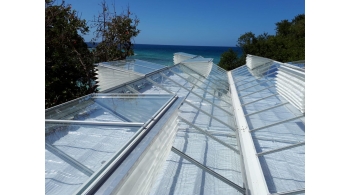
Mosquito nets in greenhouses
Sometime you may welcome unexpected “guests” in glass or poly greenhouses, namely insects.
These “guests” cause problems for the plants.
To solve this problem, special insect netting is used that perform following functions:
• Prevent penetration of insect pests, birds, dust and foliage into the greenhouse;
• Keep bumblebees inside the greenhouse when using hives;
• Significantly reduce rain from entering the greenhouse.
Another advantage of such nets is the porous material from which they are made, which does not allow to accumulate moisture. That helps to eliminates associated problems such as fungal infections.
Insect netting is made of different materials and with different mesh size that should be chosen in accordance with the needs of a particular greenhouse. The mesh selection is based on the growing cycle used and the specific properties that are best suited to the needs of the project.
But it is important to remember that the smaller the mesh pitch, the better it will restrain insects, but the worse the natural ventilation of the greenhouse will be.
The use of insect netting is an effective non-chemical means of protecting plants from insects. Due to the great interest in this product, manufacturers have developed their various types for use in indoor growing.
We hope that this article was useful to you! Follow our news, we are preparing more and more interesting information!